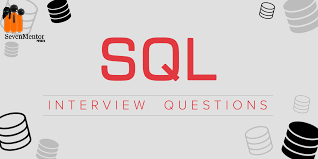-
What is Database?
A database is an integrated repository of information, all of which are carefully retrieved and store from a PC framework. Databases can be complex and vast, and such data sets use static design and methodological approaches.
-
What is DBMS?
DBMS represents the database management system. DBMS is a framework programming in which data structures are created, retrieved, updated, and accountable to the database system. It is guaranteed that our information is reliable, integrated, and efficiently set up as data and is filled as an interface between its end client and application programming projects.
For Free, Demo classes Call: 7350586163
Registration Link: Click Here!
-
What is RDBMS? How could it be unique about DBMS?
RDBMS represents the relational database management system. There are key differences here, in contrast to DBMS, where RDBMS data is stored as a form of relationships that can be identified within the general fields of this table. The most current database administration frameworks like MySQL, Microsoft SQL Server, Oracle, IBM DB2, and Amazon Redshift rely on RDBMS.
-
What are Constraints in SQL?
Constraints are used to indicate information related guidelines in the table. It can be applied to a single or multiple files of an SQL table when creating a table. We are using the ALTER statement for performing the task. The requirements are:
NOT NULL – Restricts NULL value from being insert into a column.
CHECK – Verifies that all qualities in a field fulfill a condition.
DEFAULT – Automatically allocates default esteem if no worth has been determined for the field.
UNIQUE– Ensures one of a kind qualities to be embedded into the field.
INDEX – Indexes a field giving quicker retrieval of records.
PRIMARY KEY – Uniquely identifies each record in a table.
FOREIGN KEY – Ensures referential integrity for a record in another table.
For Free, Demo classes Call: 7350586163
Registration Link: Click Here!
-
What is a Primary Key?
The PRIMARY KEY is uniquely identified in every row in a table. It must contain a UNIQUE and NOT NULL records. A table in SQL is strictly restricted to have one and only one primary key, which is comprised of single or multiple fields (columns)
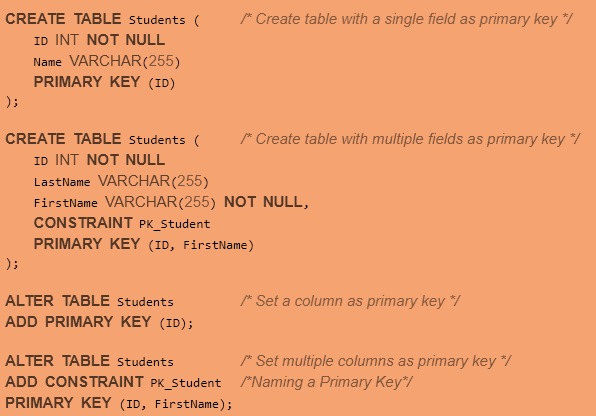
-
What is a UNIQUE requirement?
A unique constraint is guaranteed that all the values in the column remain different. It is given individuality in the columns and each line is given extraordinary recognition. In contrast to the required keys, there may be various special constraints characterized by the table. The code syntax structure for Unique is the same as the primary key and can be used interchangeably.
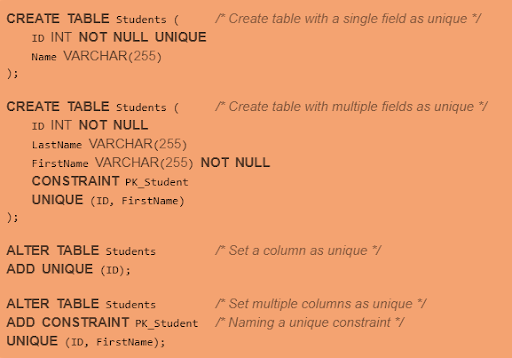
For Free, Demo classes Call: 7350586163
Registration Link: Click Here!
-
What is a Foreign Key?
A foreign key contains a unit or set of fields in a table that refers to the primary key in another table. Foreign key constraint ensures referential integrity in the relation between the two tables.
The table with the foreign key requirement is marked as a child, and the table with the candidate key is named as the referring or parent table.
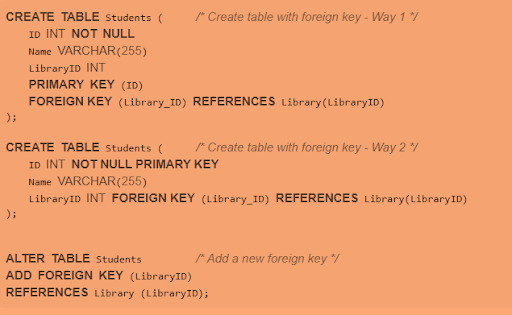
-
What is the distinction between Clustered and Non-bunched file?
As clarified over, the distinctions can be separated into three little factors. The clustered index is based on the order in which the records are stored on any database. The Non-clustered index is made up of a separate element inside the table that is referred to in the original table.
The Clustered index simplifies the data from the data set and is used for quick retrieval, whereas, fetching records from the non-clustered index is relatively slower.
A table in SQL may contain a single clustered file, although it may contain a different non-clustered index.
-
What is Data Integrity?
Data integrity is a fundamental aspect of the design, execution, and use of any structure in which information is stored, measured, or restored, to ensure the accuracy and continuity of information over its entire life cycle. It similarly identifies the integrity constraints for approving business rules on information after it has been moved to an application or data set.
For Free, Demo classes Call: 7350586163
Registration Link: Click Here!
-
What is a Subquery? What are its sorts?
A subquery says there is a query inside another query, It is also known as a nested or inner query. It is used to restrict or enhance the data to be queried by the main query, thus restricting or enhancing the output of the main query respectively. For example, here we fetch the contact information for students who have enrolled for the physics subject:
There are two kinds of subquery – Correlated and Non-Correlated.
No related subqueries can be considered as a free investigation, yet it is recorded in the FRM of the initial question that can be indicated in a table to the department.
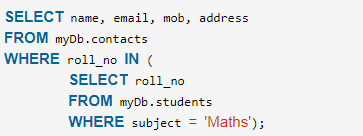
-
What is Cursor? How to utilize a Cursor?
The data set cursor is a control structure that is considered to traversal records in the database. Also, cursors are encouraged to prepare after crossing, for example, retrieving, and expanding, and deleting data set records. They can be seen as pointers of one row in a collection of rows.
Working with SQL Cursor
A cursor is defined after any variable declaration. The cursor declaration should be consistently related to a SELECT statement.
Open the cursor to initialize the result set. The demand for open should be stated before bringing the column from the result set.
FETCH statement to retrieve and move to the next row in the result set.
Call the CLOSE statement to deactivate the cursor.
At last, utilize the DEALLOCATE statement to delete the cursor definition and delivery the related assets.
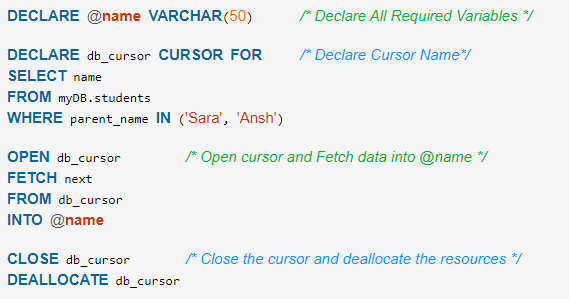
-
What are the contrasts between OLTP and OLAP?
OLTP means online transaction processing, a class of programming applications to support transaction-based projects. An important feature of the OLTP structure is the ability to look after it simultaneously. OLTP frameworks are often followed by a decentralized design to avoid the single purpose of failure. These frameworks are, for the most part, intended for a large audience of clients who conduct short exchanges. The searches involved with such data sets tend to be large and require a quick response time and moderately return a few of the records. The number of exchanges per second serves as a powerful measure for such frameworks.
OLAP represents online analytical processing, a class of software programs that are characterized by the moderately low repetition of online transactions. Queries are often extra complex and include large aggregations. For OLAP frameworks, effectiveness measurement is deeply dependent on response time. Such frameworks are widely used in most data mining or maintaining aggregated, historical data, usually in multi-dimensional schemas.
For Free, Demo classes Call: 7350586163
Registration Link: Click Here!

-
What is a Stored Procedure?
A stored procedure technique is a subroutine that is accessible in applications that are entered into a relational database administration framework (RDBMS). Such procedures are left in the data set data word reference which is the only disadvantage of the stored procedure of technique that it is not executed anywhere other than the data set and more memory is involved in the data set server.
-
What do you comprehend by Timestamp, Difference among Datetime and Timestamp datatypes?
Ans: Datetime: Datetime is a datatype.
Timestamp: Timestamped is a data type that ensures naturally produced binary numbers, which become one of a kind inside a data set. The timestamp is commonly used as a mechanism for version-stamping table rows. Capacity size 8 bytes.
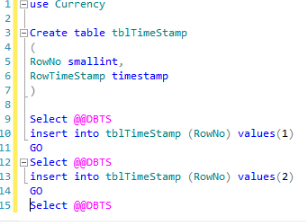
Author:
Apurba Chatterjee
SevenMentor Pvt Ltd
Call the Trainer and Book your free demo Class for JAVA now!!!
© Copyright 2019 | Sevenmentor Pvt Ltd.

